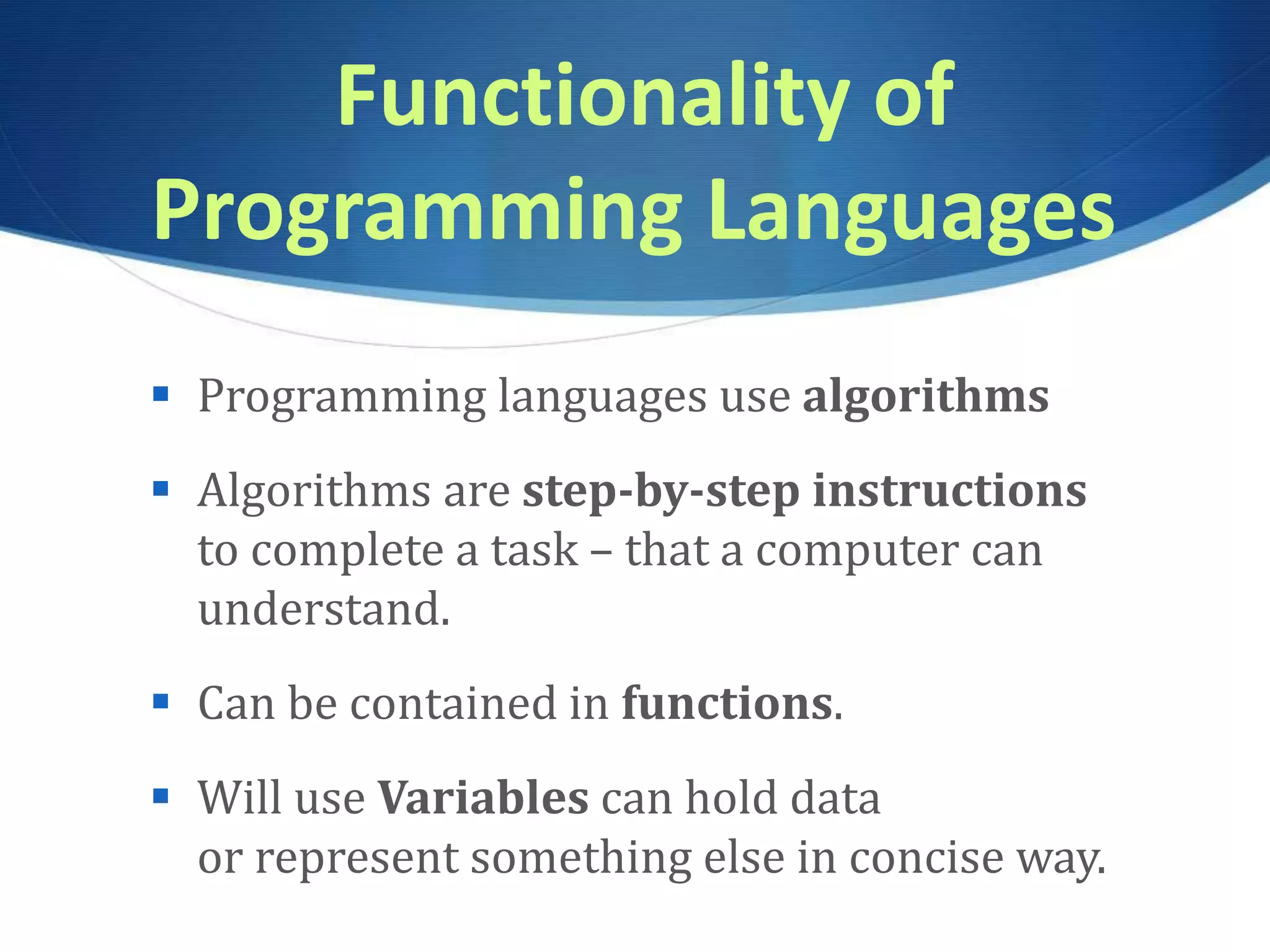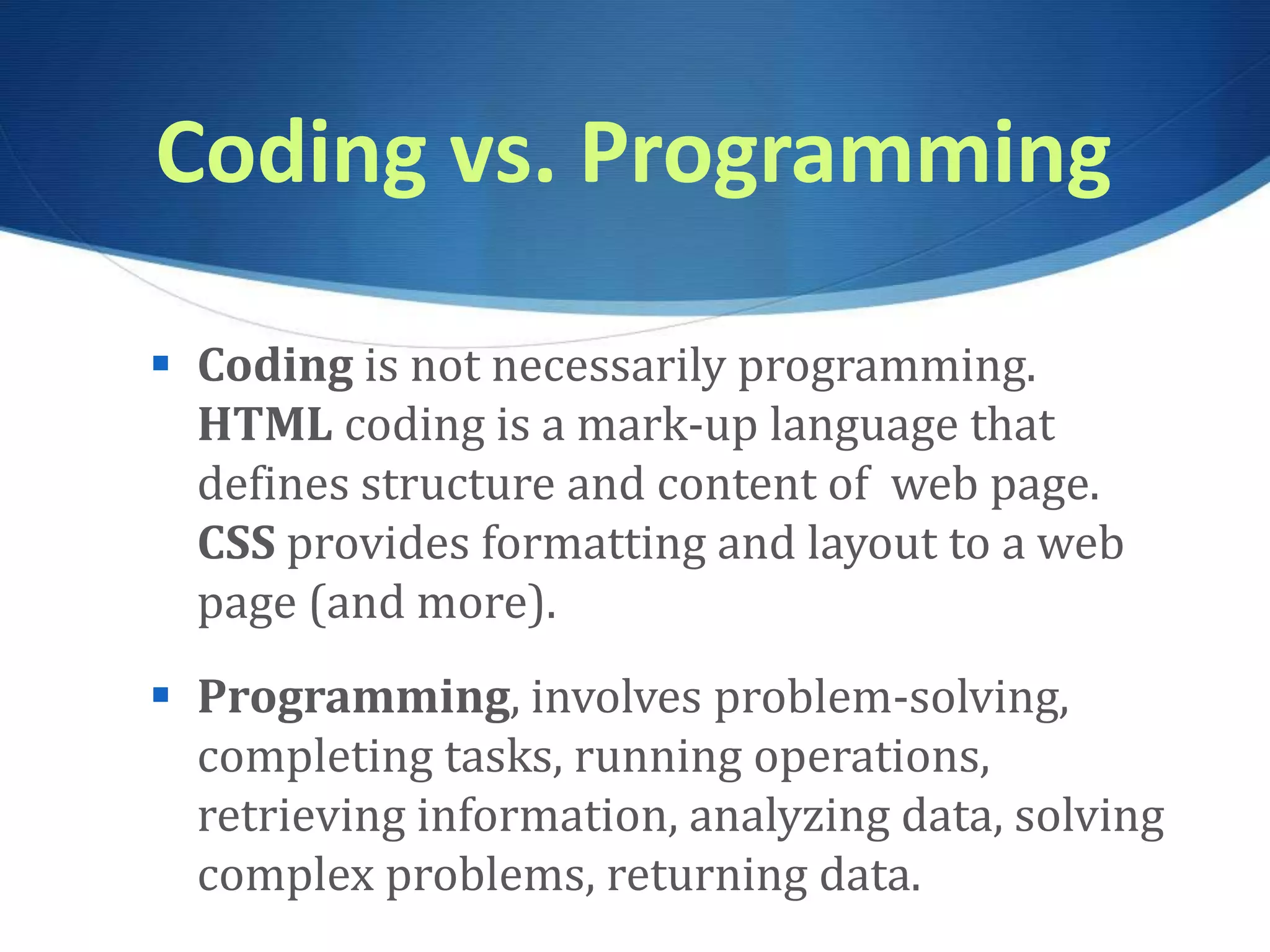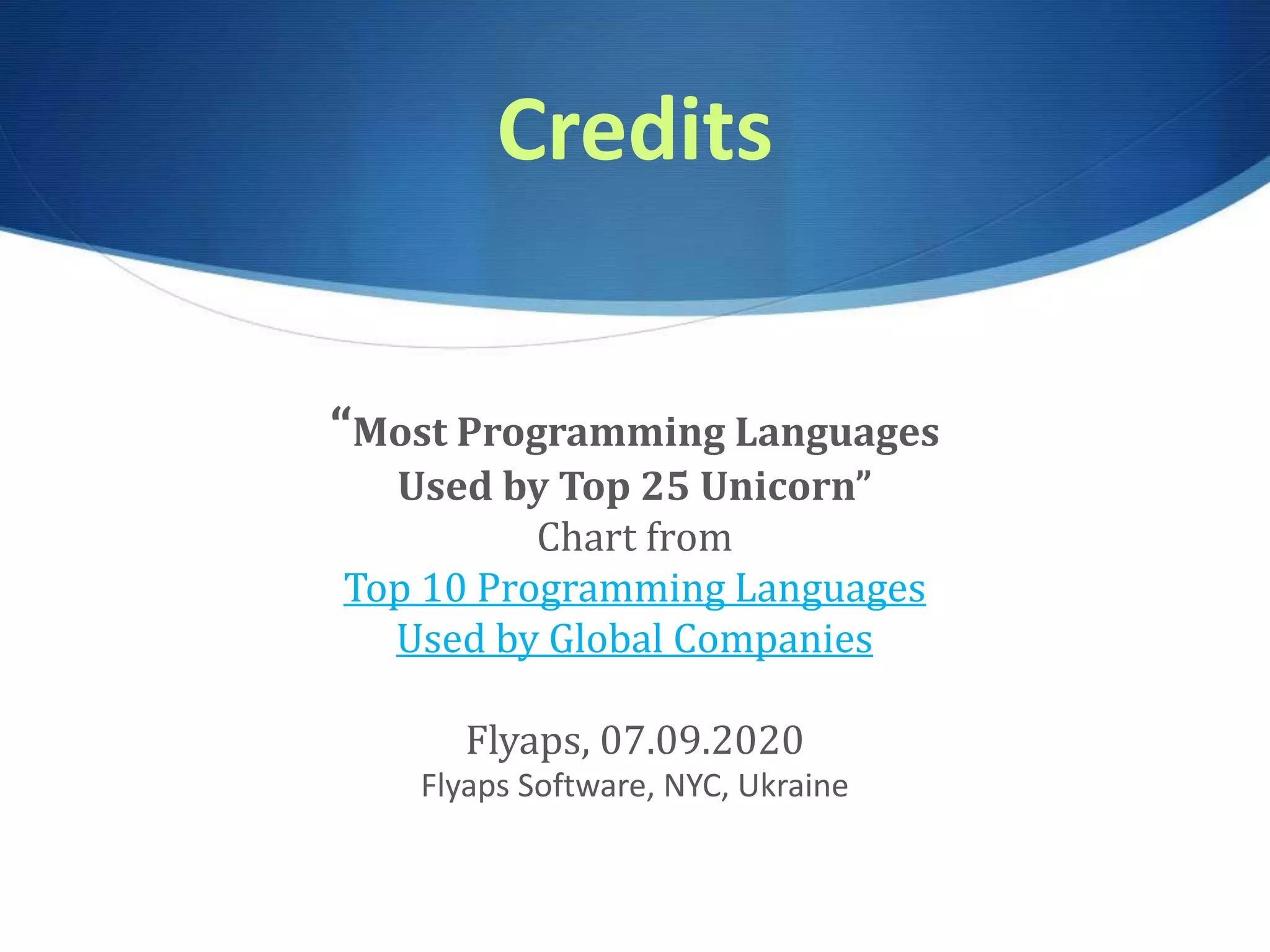The document provides an introduction to programming, defining it as a series of instructions for computers. It discusses various types of programming languages, including machine language, assembly language, and high-level languages, and outlines their characteristics and syntax. Additionally, it distinguishes coding from programming and emphasizes the role of algorithms in executing tasks.
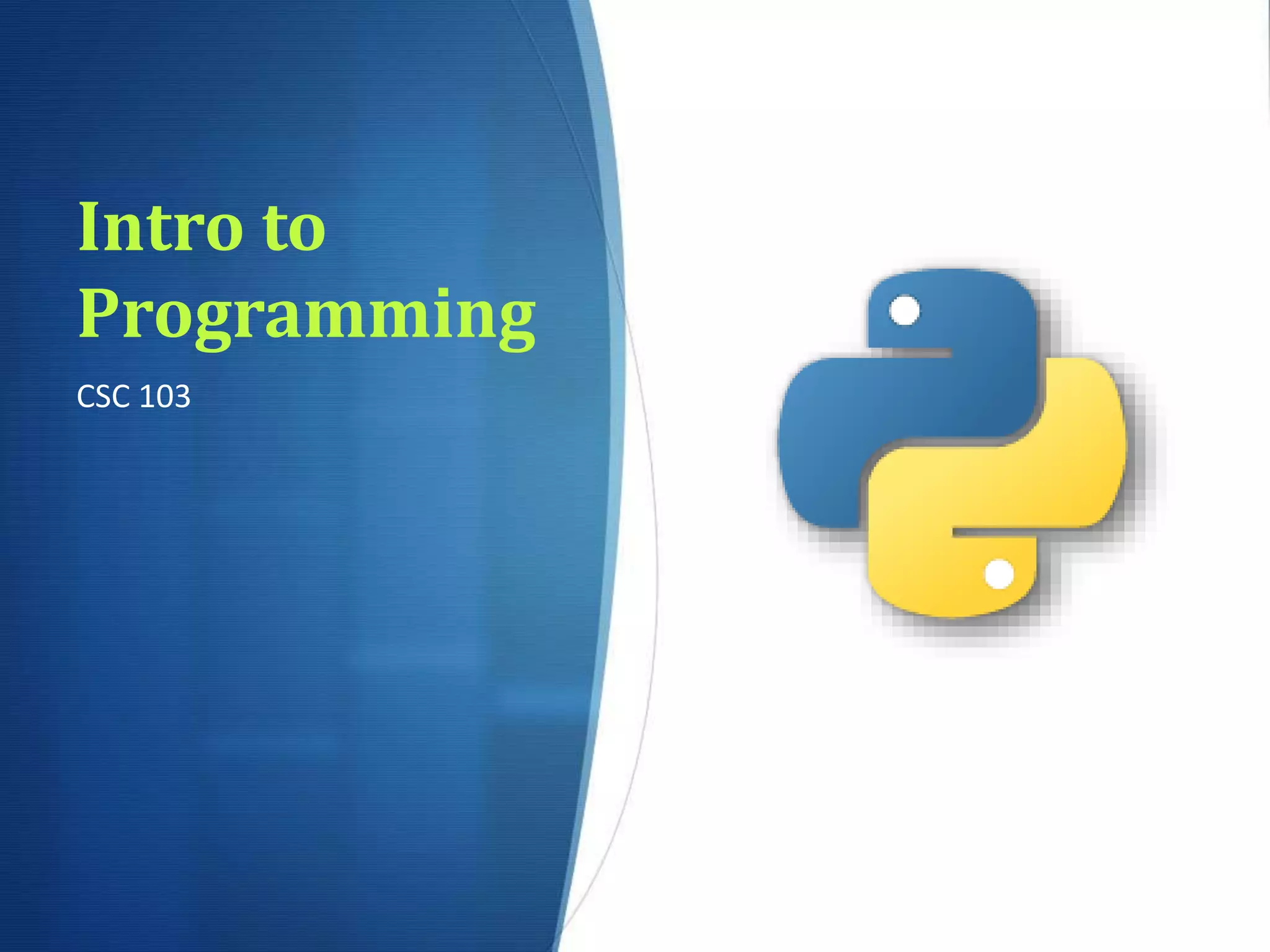
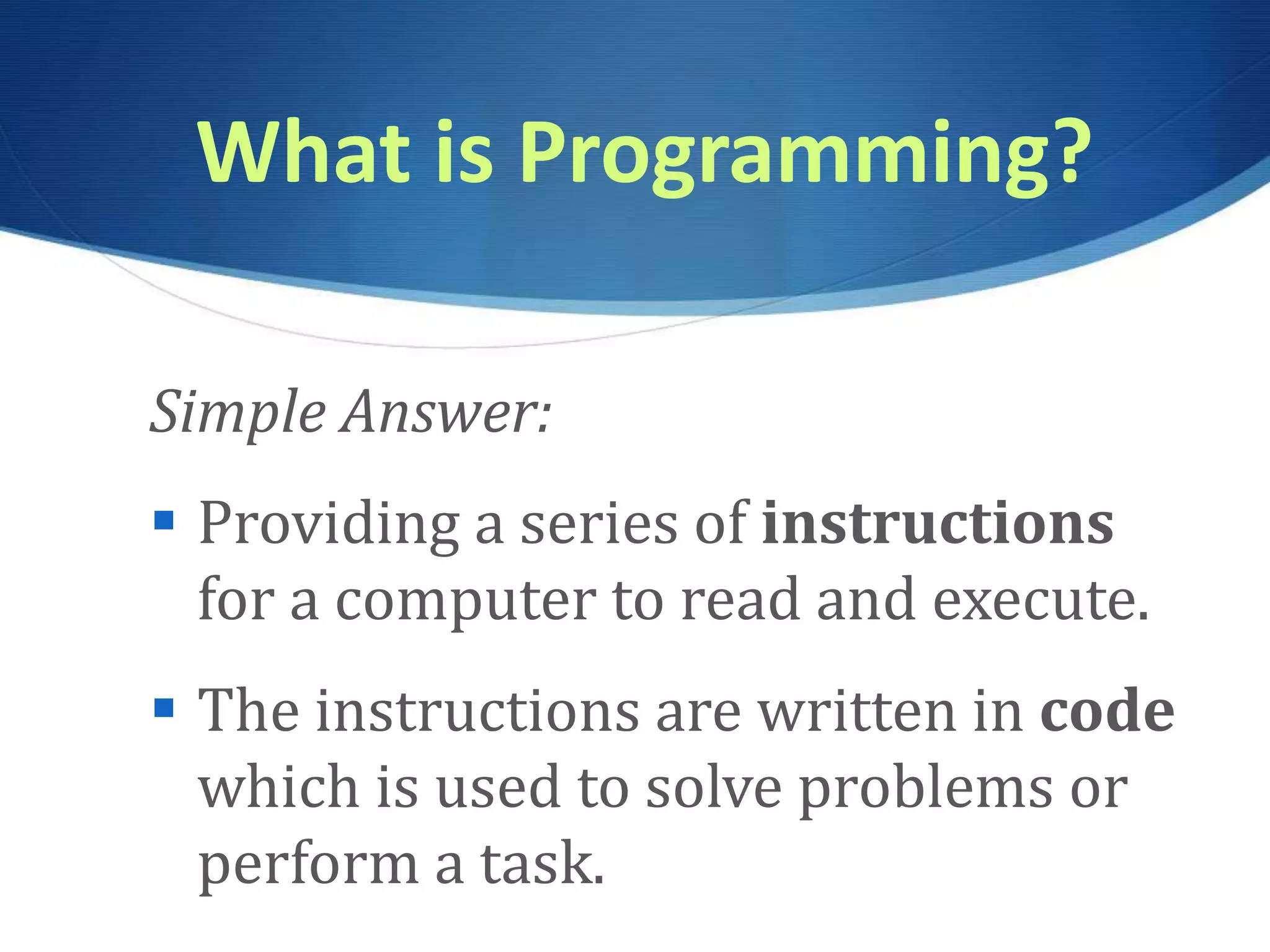


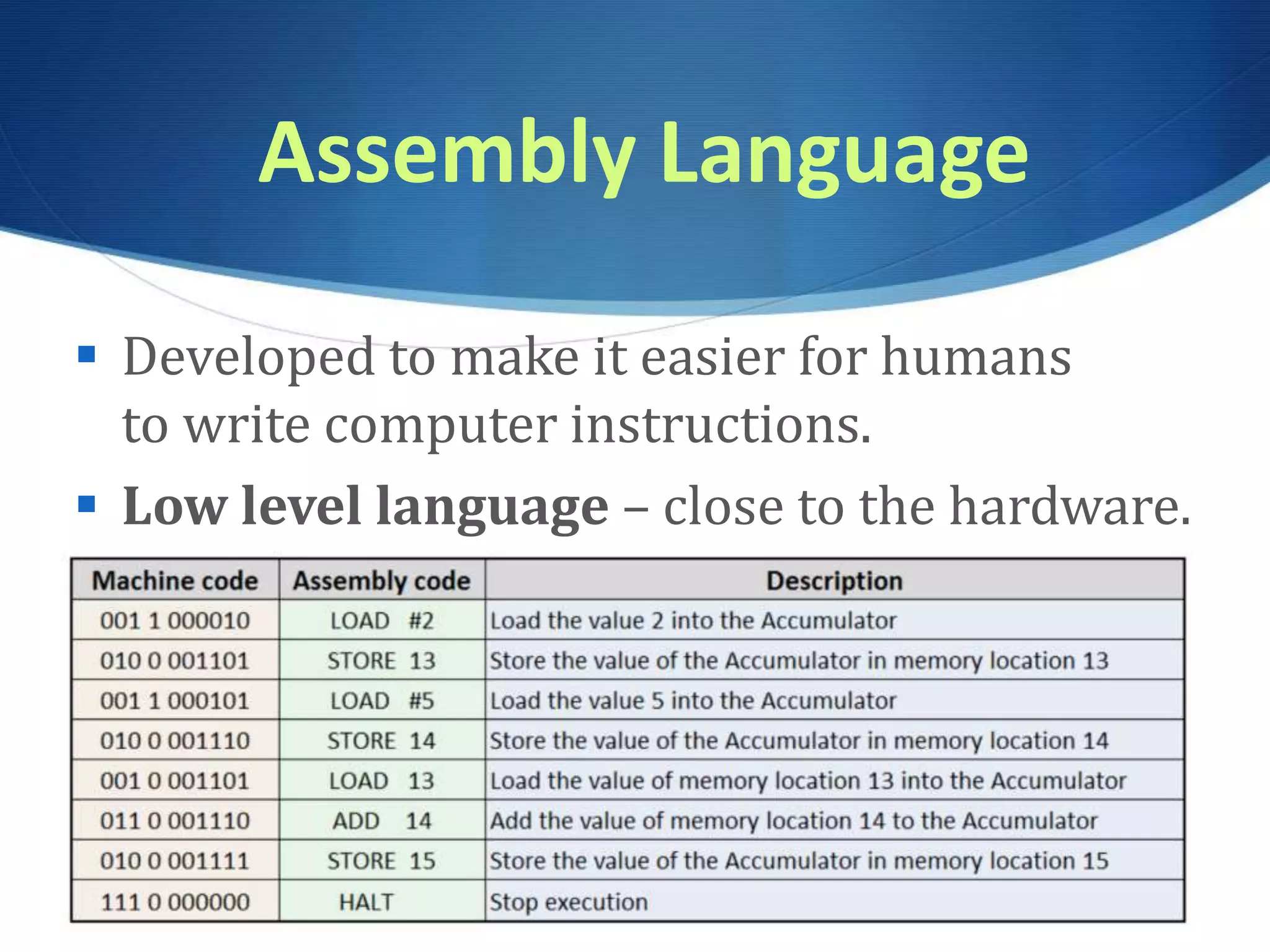
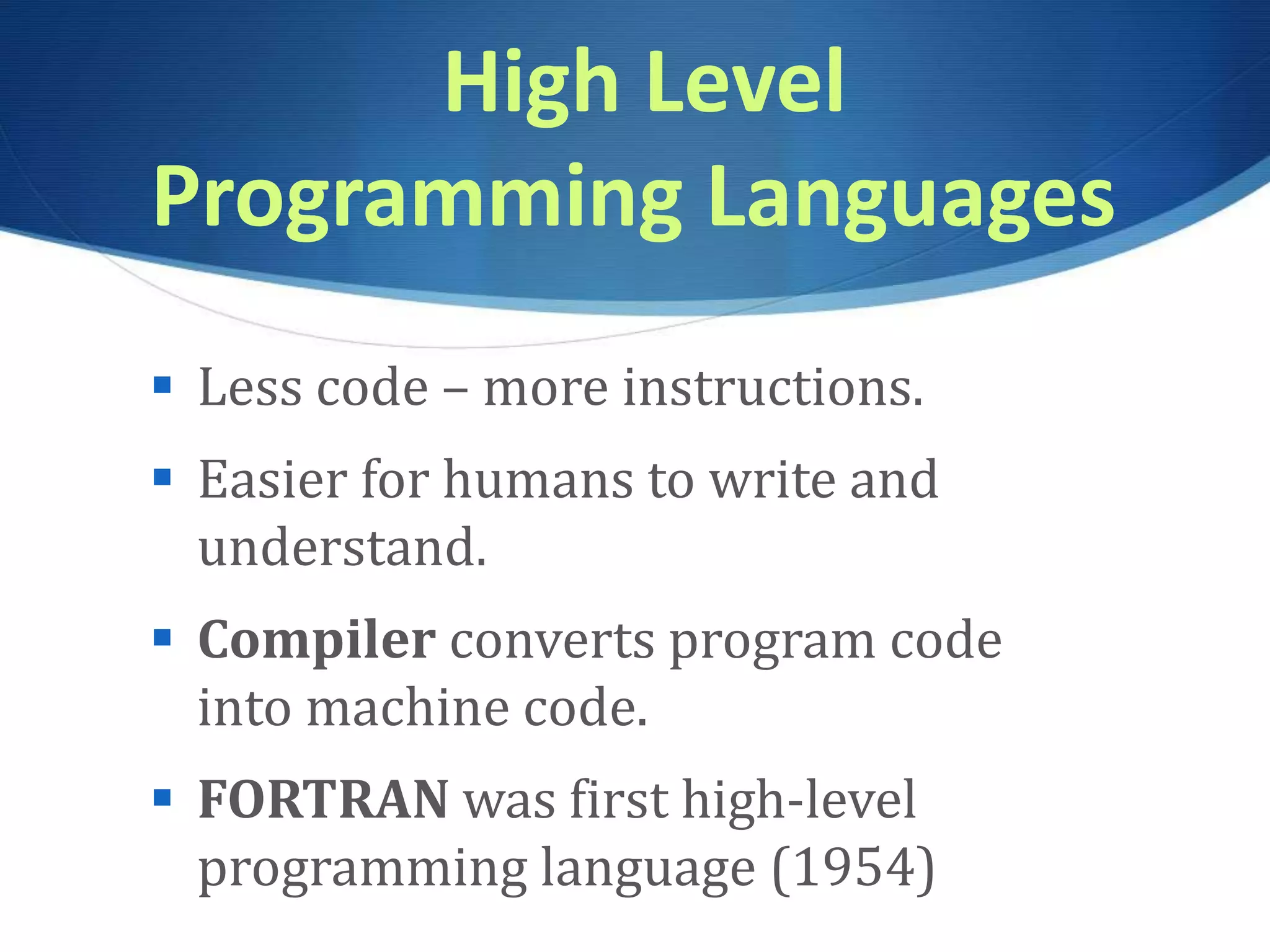
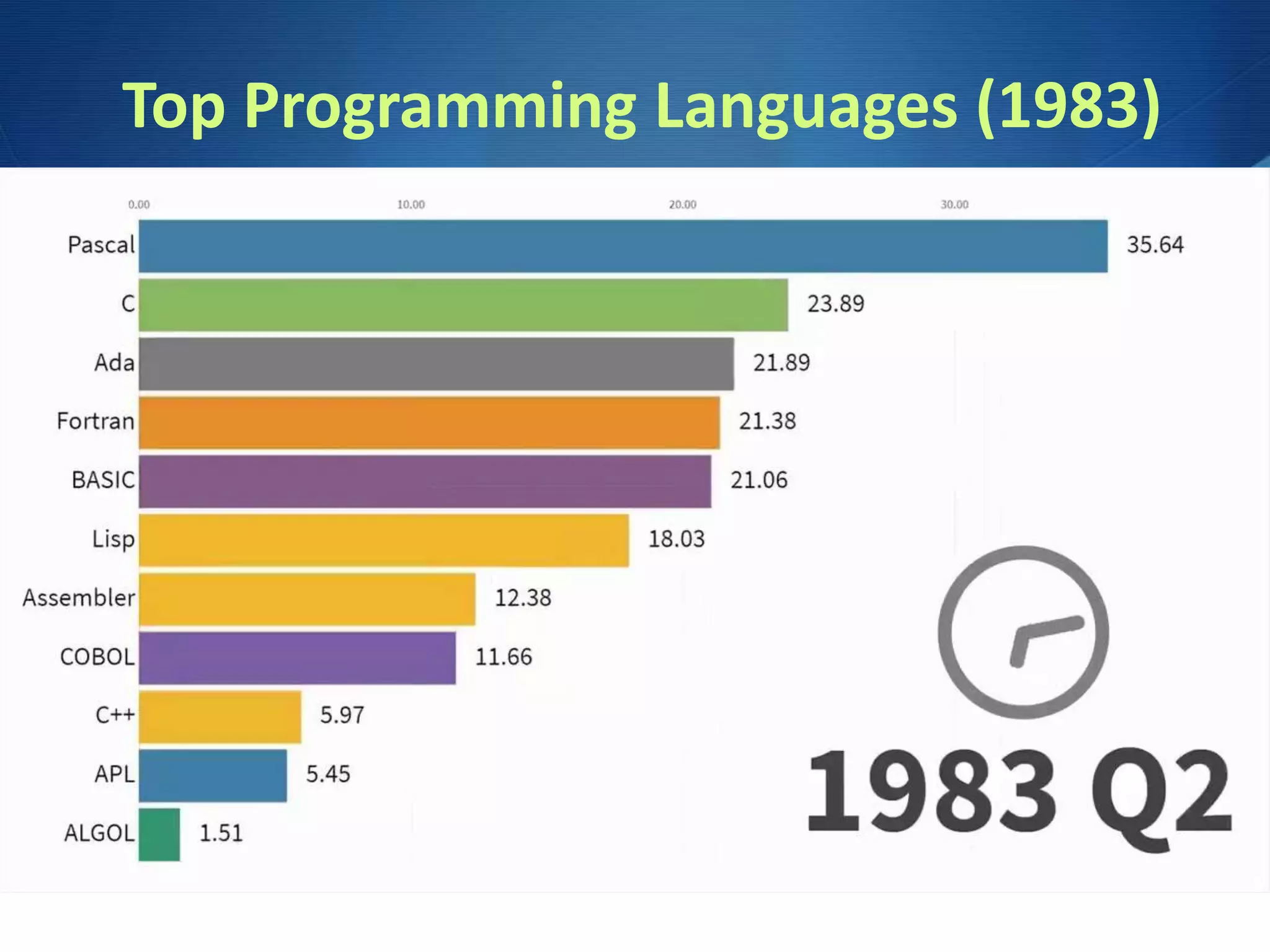

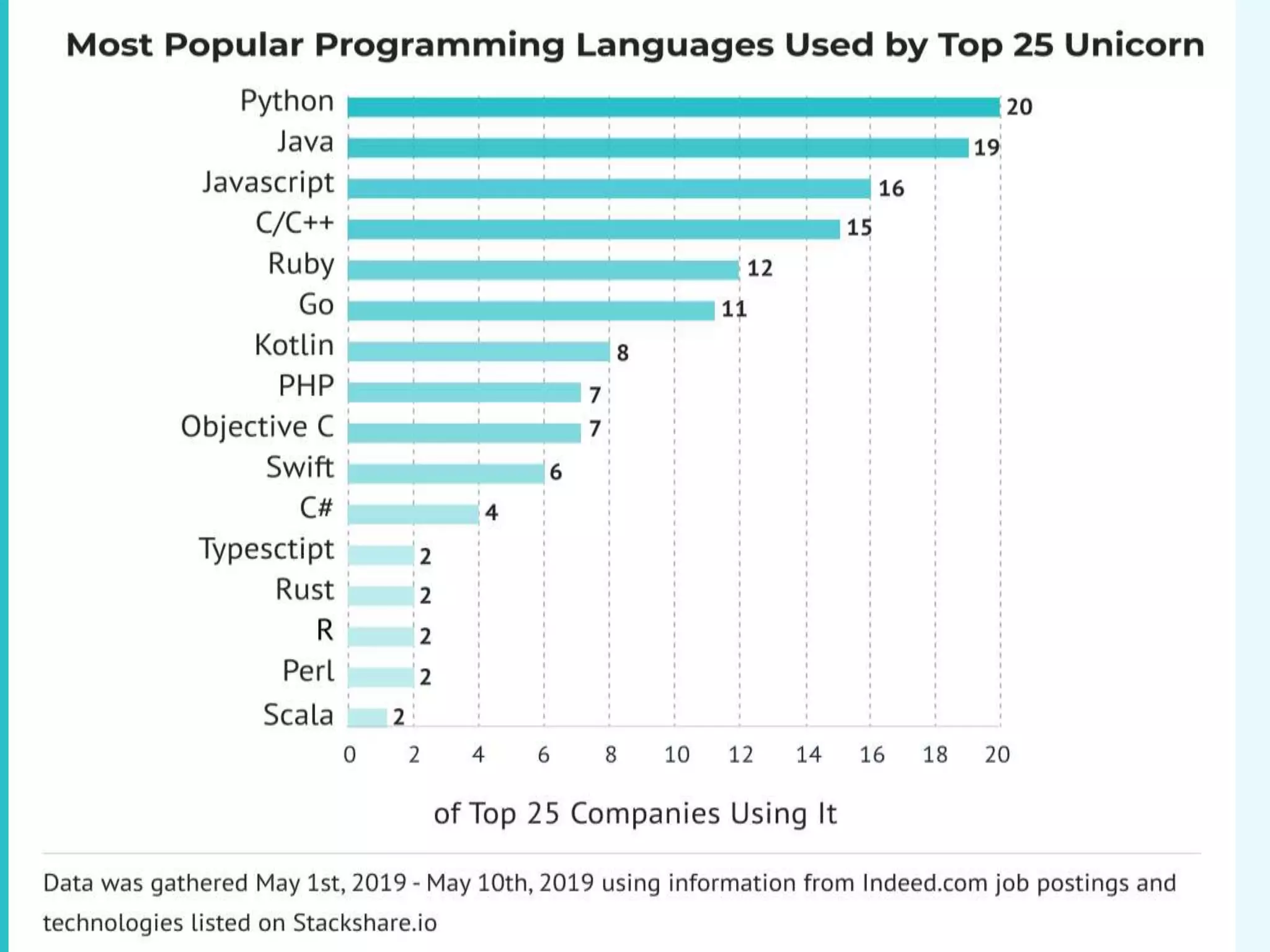
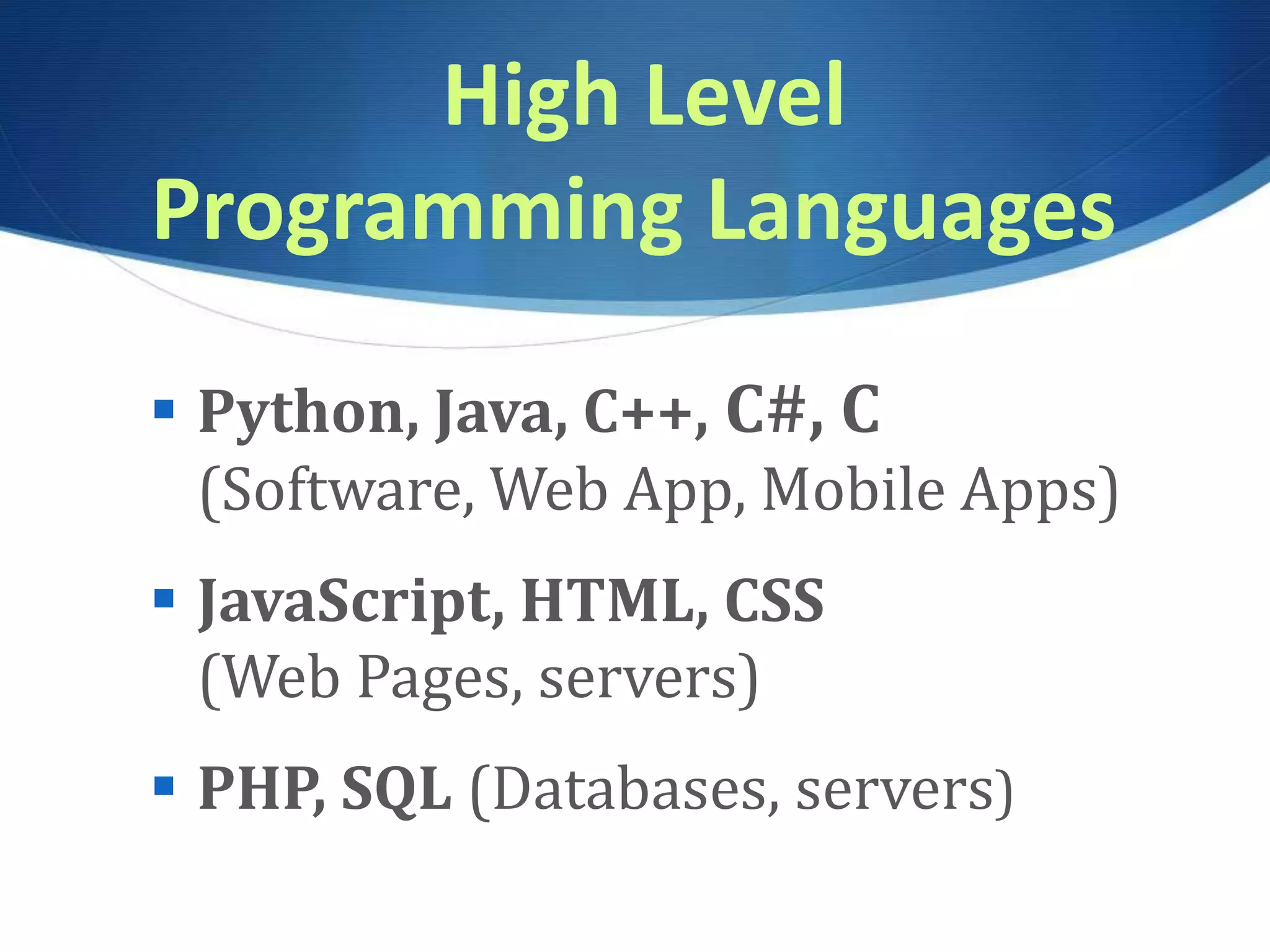
![Structure/Syntax of Programming Languages Programming languages have their own syntax – way the language is written – Punctuation – ; : . ( ) { } [ ] < > = == # Keywords – var function def array for while Data Types – strings, numbers, variables Boolean, objects, arrays, lists](https://image.slidesharecdn.com/csc103introprogramming-201104215329/75/CSC103-Intro-to-Programming-11-2048.jpg)
